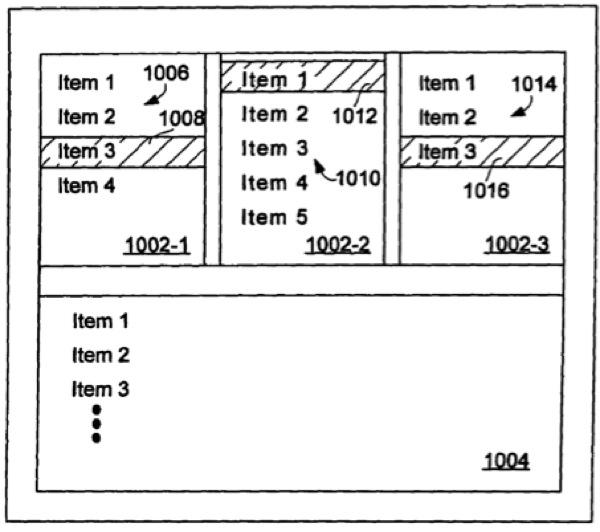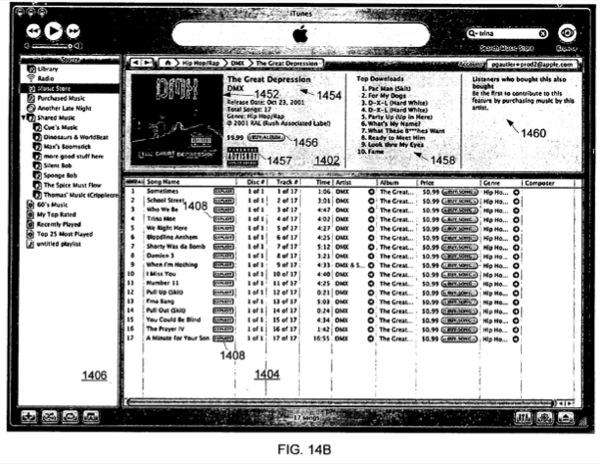The U.S. Patent and Trademark Office published patent 8,161,411 for a "Graphical user interface for browsing, searching and presenting media items" nearly 8 years after Apple originally filed the application in 2004.
The '411 patent describes iTunes as a standalone computer program that is able to organize, present and sell media pulled from an off-site server in an intuitive and easy-to-use format.
From the patent abstract:
Improved graphical user interfaces suitable for reviewing, browsing, previewing and/or purchasing media items are also disclosed. The graphical user interfaces are suitable for reviewing or browsing numerous media items. The graphical user interfaces are also suitable for previewing or purchasing media items in an on-line manner. The graphical user interfaces are particularly useful for a system that provides purchase and distribution of media in a client-server environment.
The patent provides for a graphical UI in which windows and sub-windows display media classified by data sets, moving from broad "genre" categories to the more specific "artist" or "song name." Hyperlinks are used to move through the aggregated data and appear as lists through which a user can navigate.
Parsing the information by rows, columns and lists in different sub-windows within the main iTunes window makes for a clean, information-rich interface that has become the hallmark of Apple's online store.
Windowed iTunes UI with hyperlinked lists. | Source: USPTO
Apple officially launched the iTunes Music Store in April 2003 and filed the '411 patent a year later, claiming invention of the fledgling program's basic look and feel which was much like its Mac OS X "Jaguar" contemporary.
At the time, the iTunes Music Store UI had to handle 200,000 songs, compared to the well over 20 million available today. Due to the massive catalog, the program has seen significant backend changes since it was first launched, but even the latest version 10.6.1 which rolled out in March still carries the same basic design as the original.
As the amount of digital content on the store grew to forms of media other than music, the service was renamed the "iTunes Store" to reflect the various offerings available like movies, podcasts and ultimately books and apps.
First leveraging the popularity of the iPod, the iTunes Store now offers content to a variety of devices including the iPhone, iPad and Apple TV. With the hot-selling iDevice product line and a powerful sales model, Apple's iTunes has become the world's largest music store and has served up over 16 billion songs and 25 billion apps to date.
 Mikey Campbell
Mikey Campbell








-m.jpg)






 Marko Zivkovic
Marko Zivkovic
 Malcolm Owen
Malcolm Owen


 William Gallagher
William Gallagher
 Amber Neely
Amber Neely
 Sponsored Content
Sponsored Content



-m.jpg)






23 Comments
Eight years, huh.
What the heck was the holdup?
Aha! Apple now can sue Spotify and Google Music.
Aha! Apple now can sue Spotify and Google Music.
If the shoe fits, then yes.
Aha! Apple now can sue Spotify and Google Music.
Awesome. It's soon going to get very ugly over at Google.
Why the hell can you patent what's basically a nested list? What happened to novelty and inventive step?